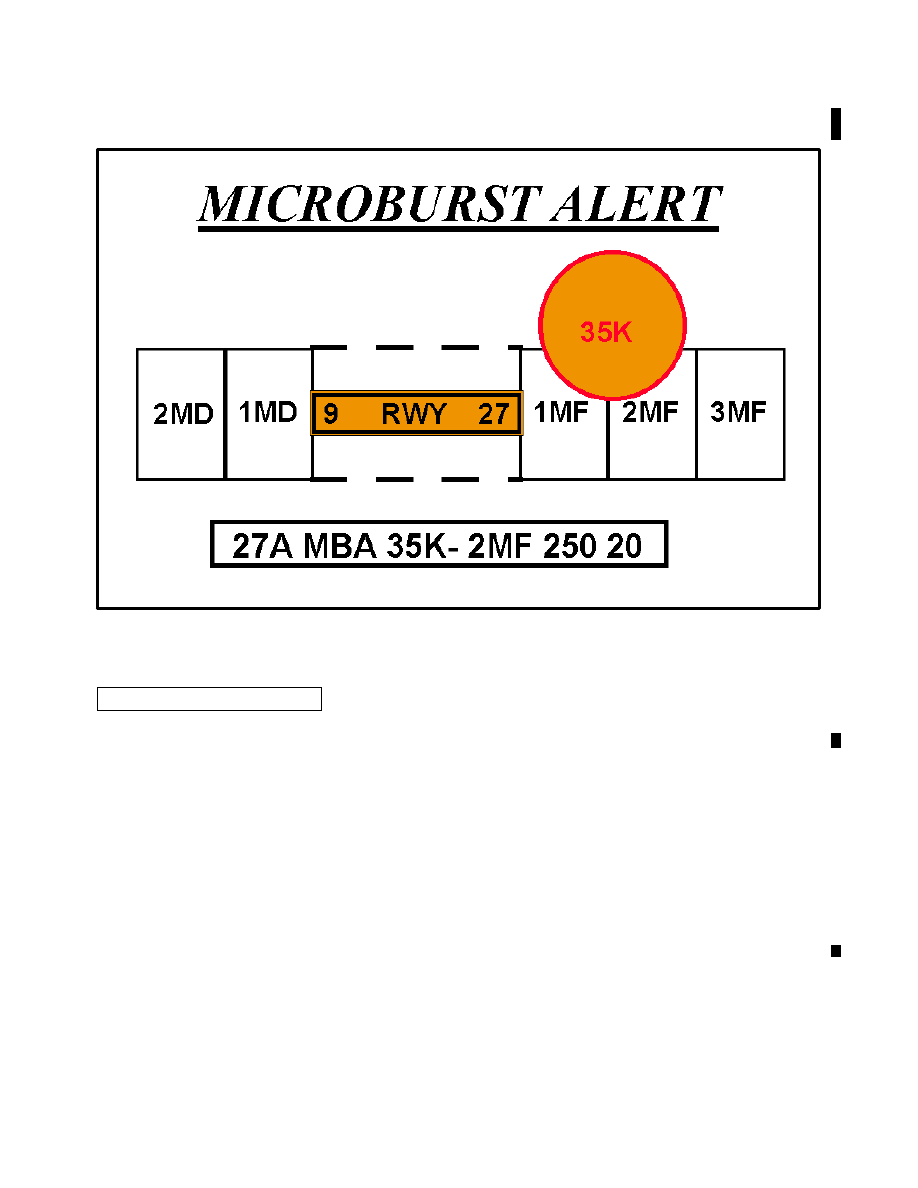
4/20/23
AIM
FIG 7
−
1
−
18
Microburst Alert
(b) WIND SHEAR ALERTS
EXAMPLE
−
This is what the controller sees on his/her ribbon display in the tower cab.
27A WSA 20K
−
3MF 200 15
NOTE
−
(See FIG 7
19 to see how the TDWR/WSP determines the wind shear location).
This is what the controller will say when issuing the alert.
PHRASEOLOGY
−
RUNWAY 27 ARRIVAL, WIND SHEAR ALERT, 20 KT LOSS 3 MILE FINAL, THRESHOLD WIND 200 AT 15.
In plain language, the controller is advising the aircraft arriving on runway 27 that at about 3 miles out they can
expect to encounter a wind shear condition that will decrease their airspeed by 20 knots and possibly encounter
turbulence. Additionally, the airport surface winds for landing runway 27 are reported as 200 degrees at 15 knots.
NOTE
−
Threshold wind is at pilot’s request or as deemed appropriate by the controller.
REFERENCE
−
FAA Order JO 7110.65, Para 3
−
1
−
8, Low Level Wind Shear/Microburst Advisories, Subpara b2(a).
Meteorology
7
−
1
−
57